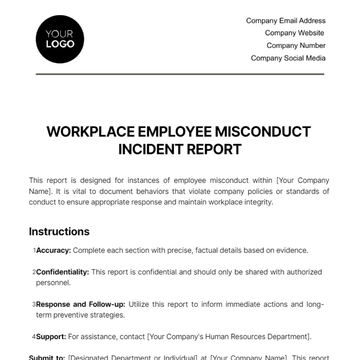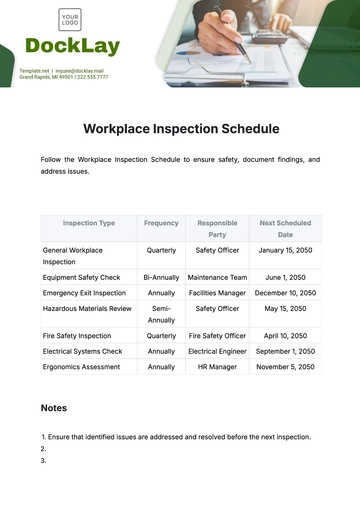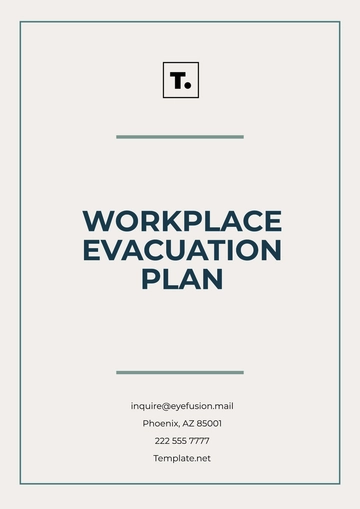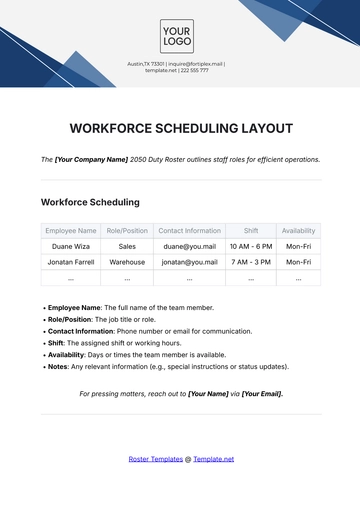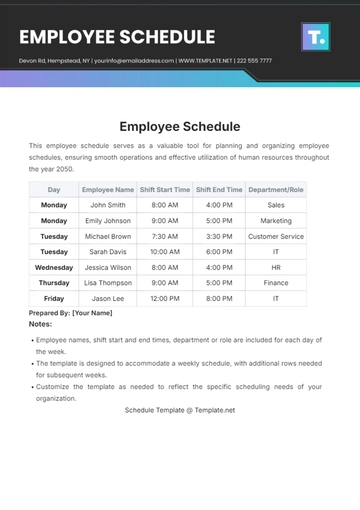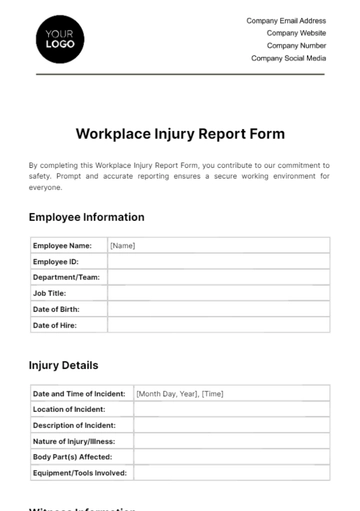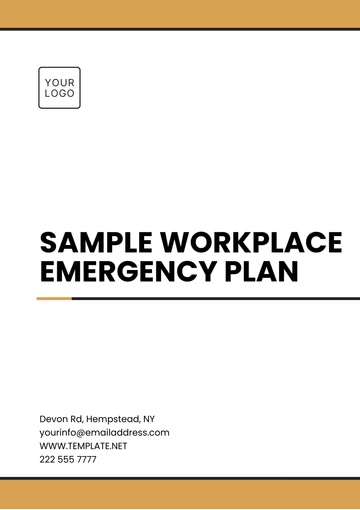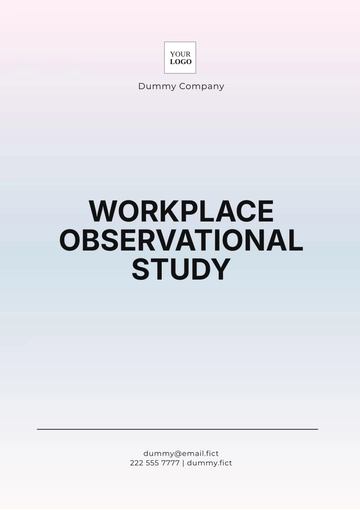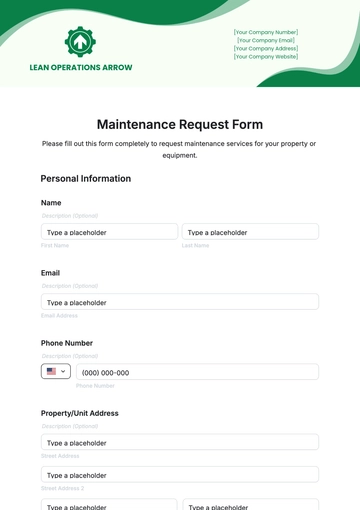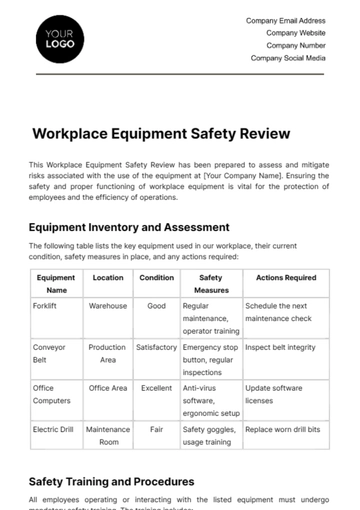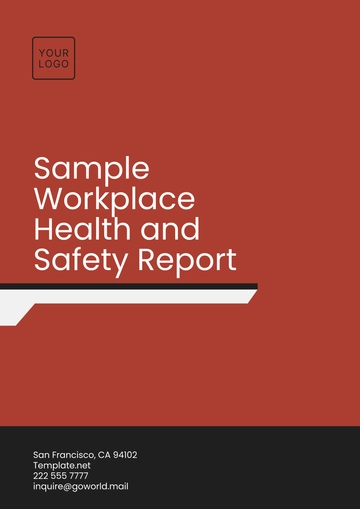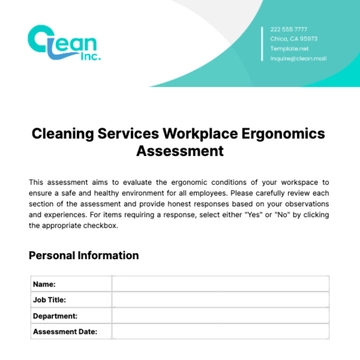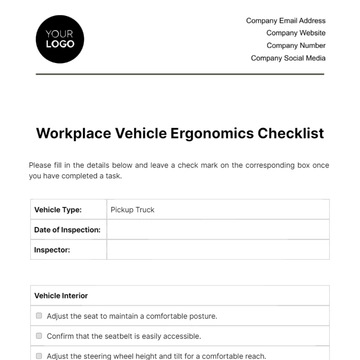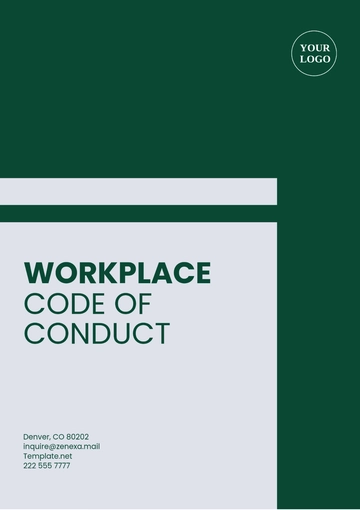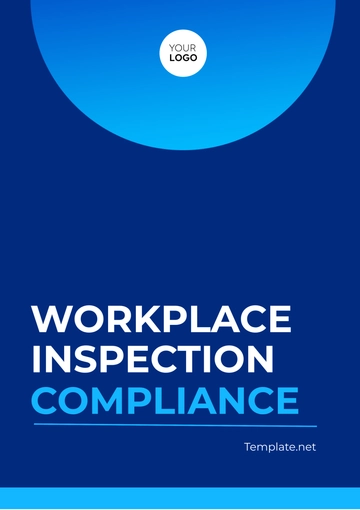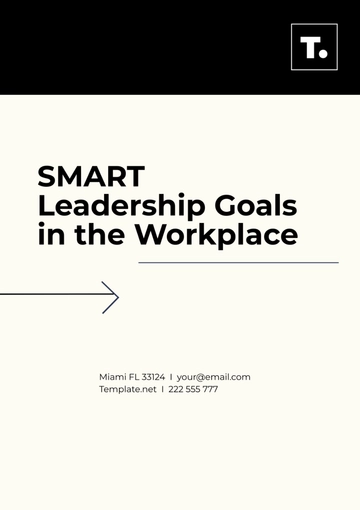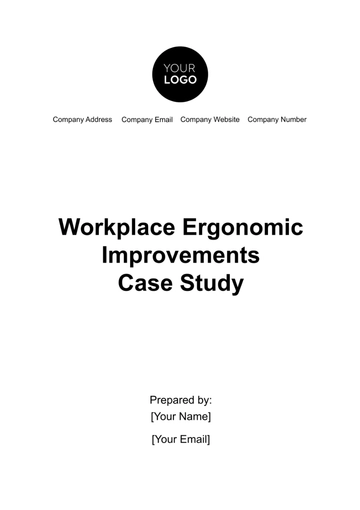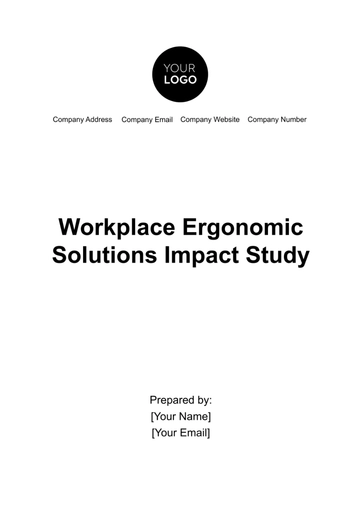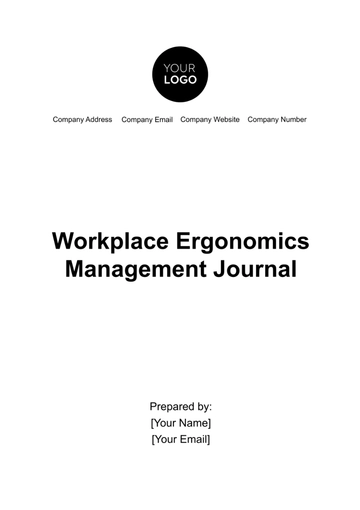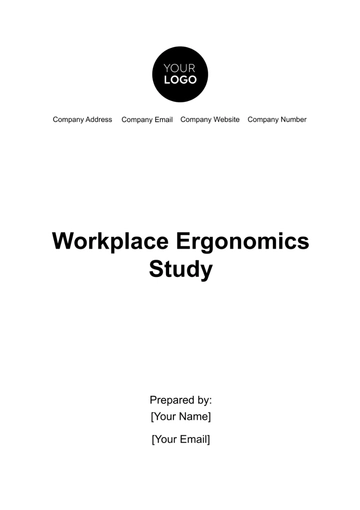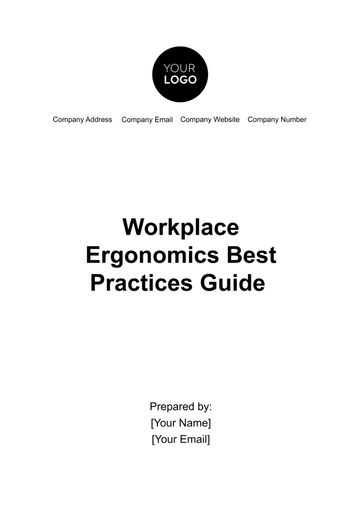Free Workplace Ergonomics Best Practices Guide

I. Introduction
A. Purpose
This resource is crafted with the primary purpose of fostering a healthier and more productive work environment. This aims to equip our company with the knowledge and tools necessary to seamlessly integrate ergonomic principles, ultimately enhancing the well-being and performance of our valued employees.
B. Scope
In our commitment to workplace well-being, this guide encompasses addressing various facets of ergonomic practices within our company landscape. From workstation design to employee training, it intends to provide a holistic approach to implementing ergonomics. Its scope extends to cover across all levels of our company, aiming to create a workplace where ergonomics becomes an inherent part of our daily operations.
C. Target Audience
This guide is tailored to a diverse audience within our company, including leadership, managers, human resources, and employees at all levels. Whether you're involved in decision-making, daily operations, or are on the frontline of our workforce, the content within this guide is relevant to you. By targeting a broad audience, we ensure that everyone plays a vital role in cultivating a workplace culture where ergonomic principles contribute to the overall success and well-being of our company.
II. Definitions
Before we delve into the practical application of ergonomic best practices, here are essential terms in ergonomics and its standard definitions:
A. Anthropometry
The measurement of human body dimensions used in the design of ergonomic spaces and tools.
B. Musculoskeletal Disorders (MSDs)
Conditions that affect muscles, bones, tendons, ligaments, and other parts of the musculoskeletal system.
C. Posture
The position in which someone holds their body while sitting, standing, or performing various tasks.
D. Ergonomic Assessment
Systematic evaluation of the workplace to identify potential ergonomic risks and recommend interventions.
E. Neutral Posture
The optimal alignment of body joints to reduce strain and promote comfort.
F. Task Analysis
Evaluation of specific job tasks to determine their ergonomic impact and identify areas for improvement.
G. Carpal Tunnel Syndrome
A common condition that occurs when the median nerve, which runs from the forearm into the palm, becomes pressed or squeezed at the wrist.
H. Adjustability
The ability to modify the height, angle, or other features of furniture and equipment to suit individual preferences and body types.
III. Benefits of Ergonomics
A. Employee Health and Well-being
Ergonomic practices prioritize the health and well-being of our employees, reducing the risk of musculoskeletal disorders and enhancing overall physical comfort.
B. Increased Productivity
By optimizing workstations and minimizing physical strain, ergonomics contributes to increased employee productivity, allowing for more efficient and effective work.
C. Enhanced Job Satisfaction
A focus on ergonomics creates a work environment that is comfortable and supportive, leading to higher levels of job satisfaction and employee morale.
D. Reduced Absenteeism
Ergonomics aids in preventing injuries and discomfort, subsequently reducing absenteeism as employees experience fewer health-related issues.
E. Improved Employee Engagement
Implementing ergonomic principles demonstrates a commitment to employee well-being, fostering a sense of engagement and loyalty among our workforce.
IV. Legal and Regulatory Considerations
A. Occupational Health and Safety (OHS) Regulations
Familiarity with OHS regulations is crucial, ensuring our workplace aligns with the legal standards for health and safety, including ergonomic considerations.
B. Workers' Compensation Compliance
Adhering to ergonomic standards not only mitigates the risk of workplace injuries but also ensures compliance with workers' compensation regulations.
C. Equality and Diversity Compliance
Ergonomic practices contribute to creating an inclusive workplace by accommodating diverse needs, aligning with equality and diversity regulations.
D. Disability Accommodations
Understanding ergonomic requirements is essential for providing reasonable accommodations to employees with disabilities, promoting inclusivity and compliance.
E. International Standards Company (ISO) Guidelines
Complying with ISO guidelines for ergonomic principles ensures our company meets international standards, enhancing our global reputation and competitiveness.
V. Ergonomic Risk Assessment
Conducting a thorough Ergonomic Risk Assessment is a pivotal step in our commitment to creating a safe and conducive workplace. This assessment allows us to systematically evaluate our work environment, identify potential ergonomic hazards, and prioritize interventions to ensure the well-being of our employees.
Ergonomic Hazard | Severity Level | Likelihood Level | Risk Rating |
Poor Workspace Design | High | Medium | High |
The Severity Level, Likelihood Level, and resulting Risk Rating are vital metrics in our decision-making process. They provide a quantitative framework for understanding the potential impact of ergonomic hazards. A high-risk rating may indicate a need for immediate attention, while a low-risk rating might signify areas where preventive measures are effective. By utilizing this assessment, we empower our company to proactively address ergonomic concerns, ensuring a workplace that prioritizes employee health and minimizes the risk of injuries.
VI. Workspace Design and Layout
A. Optimizing Individual Workstations
Designing individual workstations with a focus on ergonomics involves considerations such as adjustable desks, proper lighting, and ergonomic seating to support the unique needs and preferences of each employee.
B. Spatial Arrangement and Flow
The overall layout of our workspace contributes significantly to ergonomic well-being. Ensuring a logical spatial arrangement, easy navigation, and accessibility minimizes unnecessary strain and supports a seamless workflow.
C. Collaborative Spaces
Ergonomics extends beyond individual workstations to communal areas. Designing collaborative spaces with ergonomic furniture and layouts fosters a conducive environment for teamwork while prioritizing the comfort of our employees.
VII. Furniture and Equipment Selection
A. Ergonomic Seating Solutions
Selecting chairs with adjustable features, lumbar support, and appropriate padding promotes comfort and reduces the risk of musculoskeletal issues, aligning with ergonomic best practices.
B. Height-Adjustable Desks
Introducing desks with adjustable heights accommodates various body types and preferences, allowing employees to work comfortably whether sitting or standing, promoting flexibility and movement.
C. Proper Ergonomic Tools
Beyond furniture, selecting ergonomic tools such as keyboards, mice, and monitors contributes to a holistic approach. These tools minimize repetitive strain and enhance overall comfort during daily tasks.
D. Accessibility Considerations
Ensuring that furniture and equipment are accessible to employees with diverse needs fosters inclusivity and complies with ergonomic principles, contributing to a supportive and accommodating work environment.
VIII. Incorporating Ergonomics into Job Design
A. Job Task Analysis
Collaborating with employees to understand the nuances of their tasks.
Utilizing ergonomic experts or consultants for a comprehensive analysis.
Documenting physical requirements, frequency, and duration of tasks.
B. Customized Workstations
Providing adjustable furniture and equipment to accommodate different body types.
Offering ergonomic assessments to determine individual needs.
Encouraging employees to actively participate in the customization process.
C. Task Rotation and Break Schedules
Designing a variety of tasks to distribute physical demands.
Scheduling regular breaks to allow for movement and rest.
Educating employees on the importance of adhering to break schedules.
D. Flexibility in Job Roles
Establishing cross-functional training programs for employees.
Providing opportunities for job rotation or skill development.
Encouraging open communication regarding role preferences.
E. Employee Training on Ergonomic Practices
Conducting regular workshops on proper ergonomic practices.
Offering online resources for continuous learning.
Providing hands-on training for practical application.
F. Collaboration with Occupational Health Professionals
Regularly consulting with occupational health experts.
Incorporating health assessments into the job design process.
Establishing a feedback loop between health professionals and job designers.
G. Regular Review of Job Design
Conducting periodic job design audits.
Seeking feedback from employees regarding the relevance of job roles.
Adapting job design based on technological advancements.
IX. Employee Involvement and Engagement
A. Interactive Training Programs
Engaging employees through interactive training programs fosters a comprehensive understanding of ergonomic practices. These programs encourage active participation, ensuring that employees are equipped with the knowledge to apply ergonomic principles in their daily tasks.
B. Ergonomic Task Forces
Establishing ergonomic task forces comprising employees from various departments promotes inclusivity. These task forces serve as a forum for collaborative problem-solving, allowing diverse perspectives to contribute to the development and refinement of ergonomic initiatives.
C. Surveys and Feedback Mechanisms
Regular surveys and feedback mechanisms provide a platform for employees to express their experiences and concerns regarding ergonomic practices. Actively seeking and valuing their input demonstrates our commitment to creating a workplace that reflects their needs.
X. Preventing and Managing Musculoskeletal Disorders
A. Prevention
Holistic Wellness Programs
1.1. Introduce comprehensive wellness programs that address physical, mental, and emotional well-being.
1.2. Offer workshops on stress reduction, mindfulness, and resilience to prevent the onset of musculoskeletal issues.
1.3. Incorporate team-building activities that promote a positive and supportive workplace culture.
Ergonomic Workshops and Assessments
2.1. Conduct regular ergonomic workshops to educate employees on proper workstation setup and body mechanics.
2.2. Provide ergonomic assessments for individual workstations, allowing personalized adjustments.
2.3. Encourage employees to participate in stretching exercises and ergonomic practices during breaks.
Flexible Work Arrangements
3.1. Implement flexible work schedules, allowing employees to balance professional and personal responsibilities.
3.2. Advocate for telecommuting options to reduce commuting-related strain.
3.3. Establish policies that support job-sharing or reduced hours for employees seeking a healthier work-life balance.
Knowledge-Sharing Initiatives
4.1. Foster a culture of knowledge-sharing through internal newsletters, webinars, or intranet resources.
4.2. Encourage employees to share personal health and well-being practices that have proven effective.
4.3. Recognize and reward employees who actively contribute to promoting a healthy workplace culture.
B. Management
Rehabilitation Support Services
1.1. Partner with rehabilitation service providers to offer specialized support for employees with musculoskeletal disorders.
1.2. Provide access to physiotherapy, chiropractic care, or other relevant services.
1.3. Establish clear communication channels between healthcare professionals and workplace management.
Reporting and Response Protocols
2.1. Develop a confidential reporting system for employees to communicate musculoskeletal concerns without fear of judgment.
2.2. Train managers to respond empathetically and promptly to reported issues, facilitating an open and supportive environment.
2.3. Establish a multidisciplinary response team to coordinate interventions and accommodations.
Tailored Workplace Accommodations
3.1. Create individualized workplace accommodations for employees with musculoskeletal disorders.
3.2. Modify workstations, tools, or equipment based on specific employee needs.
3.3. Collaborate with occupational therapists to assess and recommend personalized accommodations.
Peer Support Networks
4.1. Facilitate the formation of peer support networks where employees with similar conditions can share experiences and coping strategies.
4.2. Encourage mentors or support buddies to provide guidance and assistance.
4.3. Organize regular forums or support group meetings to foster connection and solidarity.
XI. Communication and Awareness
A. Strategic Communication Plans
Developing strategic communication plans ensures that our employees are well-informed about ergonomic initiatives. Clear and consistent communication fosters awareness, aligns expectations, and promotes a shared understanding of the importance of ergonomic practices.
B. Interactive Awareness Campaigns
Interactive awareness campaigns go beyond traditional communication methods. Engaging initiatives, such as workshops, webinars, and interactive materials, capture attention and create a lasting impact, reinforcing the significance of ergonomic principles in our workplace culture.
C. Recognition of Achievements
Recognizing and celebrating achievements in ergonomic practices reinforces positive behaviors. Acknowledging individuals and teams for their contributions to creating an ergonomic-friendly environment cultivates a culture that values and sustains these initiatives over the long term.
D. Regular Review and Adjustment of Communication Strategies
To maintain effectiveness, we regularly review and adjust our communication strategies. By considering feedback, gauging comprehension levels, and staying attuned to company changes, we ensure that our communication efforts remain relevant and impactful.
XII. Continuous Improvement and Monitoring
A. Establishing Ongoing Monitoring Mechanisms
Creating a system for continuous monitoring enables us to track the effectiveness of our ergonomic initiatives over time. Regular assessments ensure that our workplace remains aligned with evolving standards and employee needs.
B. Regular Evaluation and Adaptation
Regular evaluations of our ergonomic practices allow us to identify areas for improvement and adaptation. This iterative process ensures that our initiatives stay relevant, effective, and responsive to the dynamic nature of our company.
C. Feedback Loops and Employee Involvement
Implementing feedback loops, where employees actively contribute insights on ergonomic practices, establishes a culture of continuous improvement. Involving employees in decision-making ensures that their experiences and needs are integral to the enhancement process.
D. Learning from Incidents and Near Misses
Analyzing incidents and near misses related to ergonomic issues provides valuable insights. Learning from these occurrences allows us to proactively address potential risks and prevent recurrences, fostering a safer and healthier workplace.
- 100% Customizable, free editor
- Access 1 Million+ Templates, photo’s & graphics
- Download or share as a template
- Click and replace photos, graphics, text, backgrounds
- Resize, crop, AI write & more
- Access advanced editor
Unlock the secrets to a healthier and more productive workplace with Template.net's Workplace Ergonomics Best Practices Guide Template. This editable and customizable guide offers essential insights and strategies for optimizing ergonomic setups. Seamlessly editable in our Ai Editor Tool, it ensures tailored solutions for your unique workspace needs. Elevate your workplace ergonomics effortlessly.
